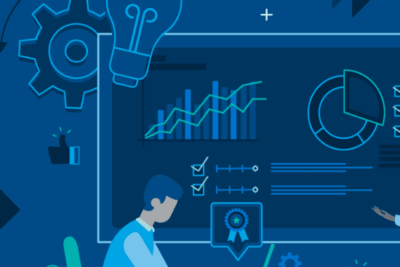Your department might be overdue for an annual checkup
Department leaders often don’t realize the influential role they play in the entire institution’s long-term success.
These leaders may think their decisions solely affect their departments. While that may be true in each isolated case, holistically, these decisions have a significant impact on their institution’s strategic priorities. To ensure institutional and departmental priorities are aligned, EAB recommends colleges and universities conduct annual department health checkups with a review of the programs within each department.
Annual department health checkups and planning conversations allow department leaders to make more immediate decisions about scheduling, hiring and promotion, and more. Since traditional program reviews typically occur every four to seven years, it is also critical to review programs within each department during these annual conversations.
With the help of the forthcoming Program Analytics dashboard from Academic Performance Solutions (APS), provosts and department/program leaders can work together to identify which programs are in the greatest need of attention and which may be ripe for cross-department or cross-program collaboration. Ultimately, the goal is to equip academic leaders with the data and tools they need to keep track of program opportunities and risks. Through frequent program check-ins, leaders are empowered to preserve both academic mission and sustainable operations.
To guide your discussion and uncover meaningful insights, consider the following three perspectives in an annual checkup.
1. The full program portfolio
Monitor your department or institution’s full suite of program offerings, which may give you a sense of which programs are most worthy of further exploration. Questions to consider include:
- Is the program portfolio aligned with enrollment
trends? - Do any programs have troubling enrollment and/or
retention trends?
2. A closer look at departments and programs
Assess what types of students the department or program serves, how students tend to progress through these programs, and patterns in instructional workload and assignments. Questions to consider include:
- What types of students does the department
serve, and does it have adequate capacity to continue to serve these students? - Are students progressing through courses within
the program in an expected order and at an adequate rate? - Do the courses within the program have an
appropriate mix of instructional staff? - What drives the program’s instructional costs?
3. Enrollment and student progress trends within programs
Diagnose barriers to student enrollment and progress with the help of insights gathered through the previous two lenses. Questions to consider include:
- How have students migrated into and out of the program between fall terms?
- When students migrate out of the program, where do they end up?
- From which “source programs” does this program attract major-changers?
- Is there a relationship between patterns in migration and barriers to student progress?
Academic leaders who use data, as well as qualitative observations, to inform these three perspectives will achieve more frequent and comprehensive checkups at both the department and program-level. While the data will help answer the questions we’ve outlined, other questions and opportunities for improvement may arise in order to better support students and instructional staff.
More Blogs

3 potential pitfalls in your institution’s return-to-work policy

The four risks of legacy tech lock-in
